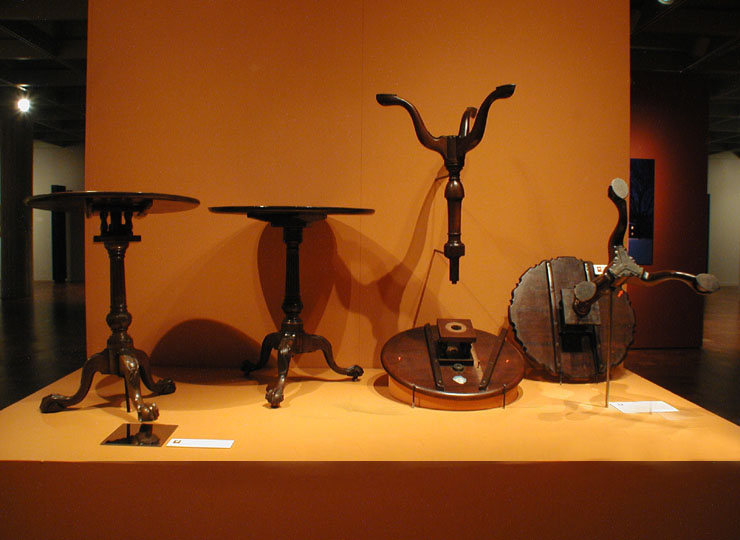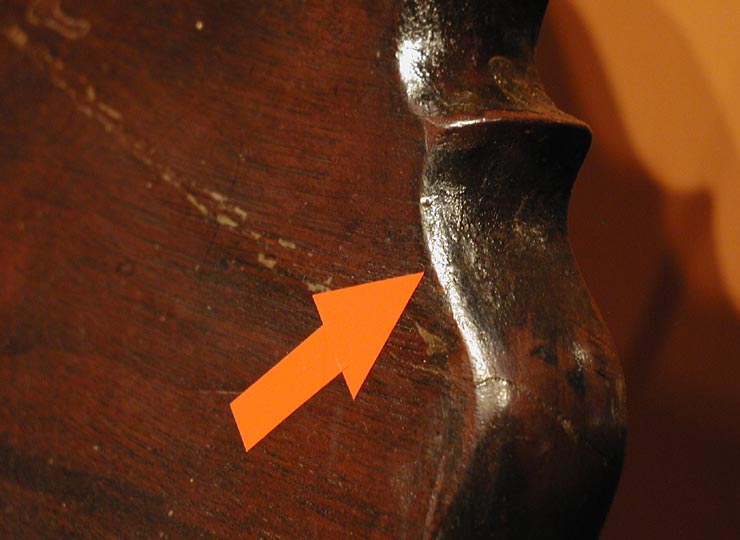
| Candlestand Philadelphia, 1780-1800 Mahogany Lent by the Chipstone Foundation 1988.19 This authentic Philadelphia candlestand exemplifies period design and workmanship. The top was nailed to a board and shaped on a lathe, as indicated by the holes on the underside of the top and the finely shaped molding. Furthermore, rotation marks on the battens and imprints of the pillar on the birdcage provide ample evidence that all of those components are original. Such consistency between parts is essential in evaluating the veracity of pillar-and-claw tea tables and stands. |
| Artificial accumulation of finish In several areas the faker attempted to simulate a thick mulit-layered finish. To achieve this affect he probably reapplied dirty finish stripped from another form. |  |
| Unconvincing wear patterns |  |
 |
| Candlestand This authentic Philadelphia candlestand exemplifies period design and workmanship. The tom was nailed to a board and shaped on a lathe, as indicated by the holes on the underside of the top and the finely shaped molding. Furthermore, rotation marks on the battens and imprintsof the pillar on the birdcage provided ample evidence that all of those components are original. Such consistency between arts is essential in evaluating the veracity of pillar-and-claw tea tables and stands. |
| Candlestand American, c. 1959 Mahogany Lent by the Chipstone Foundation 1959.4 Candlestand Philadelphia, 1765-1775 Mahogany Lent by a private collection The dealer who sold the Stones the stand on the left noted that only three or four other Philadelphia examples had such rich carving. He also assured them that the object was genuine and had no major repairs. In reality, the entire table is new, and the carving is by the same person who forged many of the other fakes in this exhibition. Several related stands and tea tables by this faker are known, most of which have an unconventional compressed ball turning on the pillar, poorly designed and ineptly carved leaves, and exaggerated claw-and-ball feet. Upon closer inspection, the carving appears significantly different and less sophisticated than that on early Philadelphia tables, including the candlestand to the right. |
| Candlestand American, c. 1961 Mahogany Lent by the Chipstone Foundation 1961.24 The same individual who sold the Stones the preceding fake stand sold them this fraudulent Philadelphia example three years later. What collector would not be enticed by the prospect of owning two great candlestands from the same city, one with carved legs and a molded or “dish” top and the other with plain knees and a scalloped top? |